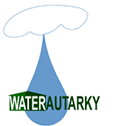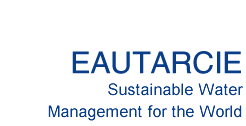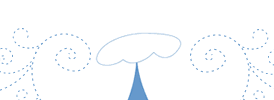
*In French, ‘EAU' means water, ‘AUTARCIE' means AUTARKY, or a self-sufficient system independent of outside influences: EAUTARCIE, [pronounced « Oh-tar-see »] is therefore a neologism...
The EAUTARCIE concept is one of the possible forms of ecological sanitation with a distinct feature : instead of focusing on the problems, it seeks out simple, efficient and economical solutions, at the root of the problems. Another feature : it takes a holistic approach that examines diverse environmental impacts.
To visualize the general schematic of a PLUVALOR system, click here![]() .
.
To visualize the general schematic of a TRAISELECT system, click here![]() .
.
The text within this page was first published on www.eautarcie.com: in 2003
The original text has since been adapted and first published on this age at www.eautarcie.org : 2009-06-15
Last update: 2017-03-20


Summary
Taking a Step Against the Mainstream
From a technical point of view, the EAUTARCIE system deals with the implementation of autonomous water systems for homes. It is suitable for all households having a small yard or garden, even in urban communities. Its realization is less of a technical problem than it is of being open-minded to a new vision on water's management and use.
EAUTARCIE is more than a simple technical option: it is a leap towards free-spirited open-mindedness. It expresses a political standpoint that tackles present-day consumer-society, the « all-to-the-bin » logic and its analogous « all-to-the-sewer » philosophy. It is a way out of our « throw away » society of institutionalized irresponsibility.
How the System Works
In a house equipped with such a system, the household reclaims and reuses water that falls on the roof, for all domestic purposes, including human consumption. Domestic wastewater management is conditioned by one’s choice of toilet. In an EAUTARCIE managed home, a flush toilet is inconsistent with sustainable wastewater management [1], under current legislation on sanitation. When choosing a BioLitter-type dry toilet (or BLT), wastewater is limited to household grey water that can simply be infiltrated into the ground or recycled to irrigate a garden during summer. Those who need or want to have a decorative pond in their garden can use treated greywater using the TRAISELECT System. The subsequent household « grey water », is purified through a compact underground system and then infiltrated into the garden grounds. Grey water quality that has been treated this way often complies with recognized drinking water standards!
This does not mean to definitely give up the flush toilet. When regulatory authorities come to accept the concept of selectively treating black water (wastewater from toilets and urinals) separately from grey water (other household wastewater), this will open up new prospects for truly sustainable water management. Those who live in rural and suburban areas will have the choice between a) a BLT dry toilet and b) a flush toilet that drains into a septic tank for later removal and treatment at an impregnation and composting centre. Dry toilet users will not need to assume the cost of processing a septic tank’s sewage sludge, such that their costs for treating domestic wastewater are practically nil.
Environmental Impacts
Overall, an EAUTARCIE household does not have any significant impact on the hydrous environment: just as if it were not there. With regards to environmental protection, the implementation of the system has positive environmental impacts exceeding the most optimistic forecasts. The system is also transposable to urban districts. Cities equipped with EAUTARCIE would greatly lessen demand on traditional hydrous reserves, and practically eliminate water pollution caused by the housing sector.
EAUTARCIE is particularly interesting for dry and desert regions of the world, where almost all water extracted from existing reserves (including all grey wastewater produced) could be made available for agriculture, without wastage and without the least risk to public health.
In areas where good quality water is no longer available, the application of the techniques herein suggested can procure water of very high quality for human consumption, at a ridiculously low cost compared with the currently recommended techniques.
When removing flush toilet from the equation, and when appropriately treating toilet effluent with bio-controlling cellulose litter, people would effectively cease to be a vector of pollution by nitrates. Furthermore, the compost hence obtained could be used for all agricultural purposes, without medical / health risks, thus contributing to a reduction in the population's water requirements.
Economic Impacts
When applying the EAUTARCIE system in urban residential districts, roof area and household needs permitting, it is possible to go without mains water supply. It is also possible to go without traditional sewerage systems [2]. In relatively small plots of land, domestic wastewater could be reclaimed by selectively treating grey water in gardens, without the least harmful environmental or medical hygienic effect. Thus, the public expense of city sanitation would be limited to the installation of drainage infrastructures that need not be watertight (thus less costly), reserved to collect and treat storm-water runoff from city roads.
In addition, where sources of water are of poor quality, mains water could provide lesser quality water for non-food uses, and it would be the household’s responsibility to produce high quality drinking water from rainwater or mains water. A person needs only about 3 to 5 litres of drinking water per day. For other uses throughout the home, water of lesser quality is quite adequate.
Even in desert areas, the production of high quality drinking water (reserved for human consumption) is possible thanks to appropriate rainwater storage and filtration.
This is true from a technical standpoint, but current legislation does not recognize the selective treatment of the different types of wastewater. The officials responsible for applying the law are unfortunately not aware of the opportunities offered by selectively recycling grey water. As a consequence, families that have adopted a good BLT dry toilet (thus producing no black water) are prevented from recycling their grey water in the garden. The legislator demands that grey water be treated with the same expensive treatment techniques as if it were combined wastewater containing human dejecta, thereby imposing substantial yet unnecessary costs on the household. Ironically, the legislator strictly forbids environmentally-friendly techniques that sustain wastewater recycling while not polluting water.
The Scientific Bases of EAUTARCIE
EAUTARCIE is the fruit of approximately 20 years of scientific research made partly with the Faculty of Applied Science at the University of Lubumbashi (Congo) and at the University of Mons-Hainaut (Belgium) [3]. This portfolio of very simple and inexpensive techniques was tested during years in the field, and the various techniques of EAUTARCIE constitute the daily reality of thousands of households in Belgium and France.
Further investigations are still ongoing, through the experience accumulated and shared by EAUTARCIE System users. That is why we ask that our correspondents report their observations about their own experiences and experiments.




